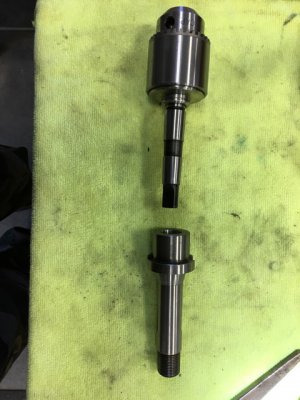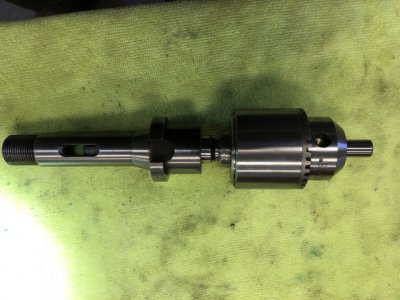Hi,
I'm new to milling-- got my VN 16 last April and have been tooling it up.
It seems to me that the main factor limiting my ability to do precise work with this mill is the collets I got with the mill (about 25 of them). The spindle runout about 1 inch up inside the spindle is .0005. I don't think there are burrs or other problems inside the spindle.
However as I go through the collets-- they almost all have variable and significant runout when I put a gage pin or precision bar in a collet and pull it up into the spindle the runout are .005 and higher when measured only about 1/2" below the collet. most of the collets have burrs inside the bore of the collets where tools have slipped etc.
New 5v Hardinge collets for this mill are about $150 each-- so this is not an option for me. Used VNc and Hardinge 5v collets are available on eBay -- usually one at a time for about $50--- and I have no idea if these collets are any good at all. I'm guessing at least half of them have runout problems.
--I have an accessory adaptor that adapts from the VNc collet to a Morse 2 taper-- so I was thinking of getting a 5c collet holder (I have a set of 5c collets-cheap imports but pretty true).
What do you guys think?
How have you guys used the VN C spindle to mill without runout bordering on "wobble"?
Thanks,
Bob
I'm new to milling-- got my VN 16 last April and have been tooling it up.
It seems to me that the main factor limiting my ability to do precise work with this mill is the collets I got with the mill (about 25 of them). The spindle runout about 1 inch up inside the spindle is .0005. I don't think there are burrs or other problems inside the spindle.
However as I go through the collets-- they almost all have variable and significant runout when I put a gage pin or precision bar in a collet and pull it up into the spindle the runout are .005 and higher when measured only about 1/2" below the collet. most of the collets have burrs inside the bore of the collets where tools have slipped etc.
New 5v Hardinge collets for this mill are about $150 each-- so this is not an option for me. Used VNc and Hardinge 5v collets are available on eBay -- usually one at a time for about $50--- and I have no idea if these collets are any good at all. I'm guessing at least half of them have runout problems.
--I have an accessory adaptor that adapts from the VNc collet to a Morse 2 taper-- so I was thinking of getting a 5c collet holder (I have a set of 5c collets-cheap imports but pretty true).
What do you guys think?
How have you guys used the VN C spindle to mill without runout bordering on "wobble"?
Thanks,
Bob



